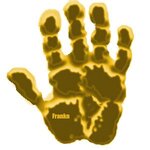UncleMatt
Bronze Member
- Jul 14, 2012
- 2,389
- 2,531
- Detector(s) used
- Garrett Infinium & Gold Bug II, Bazooka Super Prospector Sluice
- Primary Interest:
- All Treasure Hunting
Hi All, I live in an area where there are many lost mine tales, and the details of one of them have intrigued me. I am dealing with a creek canyon running north-south, with a high granite western wall of a couple thousand feet in height. Supposedly a tunnel was there very long ago, and the tale goes that is was very shallow (around 6 to 8 feet deep) and "the daylight was good all the way to the back of it, and it went underground on a slight upraise". This tunnel was discovered late on a September afternoon according to the story.
So I have a couple of problems/questions with this story, assuming it has any truth to it at all:
First, on this western canyon wall in the late afternoon, most of it is covered in shadow. Which makes one wonder how the sunlight could be going all the way to the back of a tunnel with its portal on this wall (facing east). Does that mean direct light, or just that ambient light was good enough to light the tunnel its whole, short length? If direct light, that would narrow the search area significantly, since only very small portions of the canyon from center westward are in direct sunlight in the late afternoon.
Second, exactly what is meant by the phrase "and it went underground on a slight upraise"? Does that mean there was a grade inside the tunnel going up from the portal to the back? Many shallow drifts in the area were done this way to minimize drainage issues. But it could also mean the opening to the tunnel was on the side of a small mound, or "upraise".
Please sound off on what you think about this.
The tale ends with the mine being covered intentionally by Indians, so it is supposedly no longer in plain sight. But if the time of day of discovery is accurate, and I can determine what is meant by the last half of that quote from the story, I could narrow down the search area enough to explore it on my upcoming vacation in late August.
So I have a couple of problems/questions with this story, assuming it has any truth to it at all:
First, on this western canyon wall in the late afternoon, most of it is covered in shadow. Which makes one wonder how the sunlight could be going all the way to the back of a tunnel with its portal on this wall (facing east). Does that mean direct light, or just that ambient light was good enough to light the tunnel its whole, short length? If direct light, that would narrow the search area significantly, since only very small portions of the canyon from center westward are in direct sunlight in the late afternoon.
Second, exactly what is meant by the phrase "and it went underground on a slight upraise"? Does that mean there was a grade inside the tunnel going up from the portal to the back? Many shallow drifts in the area were done this way to minimize drainage issues. But it could also mean the opening to the tunnel was on the side of a small mound, or "upraise".
Please sound off on what you think about this.
The tale ends with the mine being covered intentionally by Indians, so it is supposedly no longer in plain sight. But if the time of day of discovery is accurate, and I can determine what is meant by the last half of that quote from the story, I could narrow down the search area enough to explore it on my upcoming vacation in late August.






